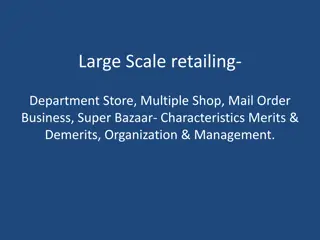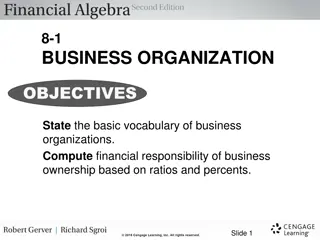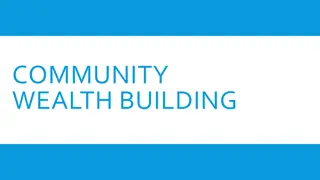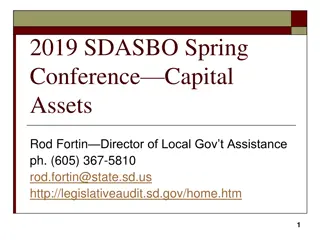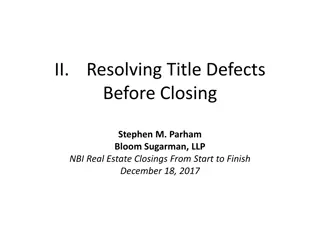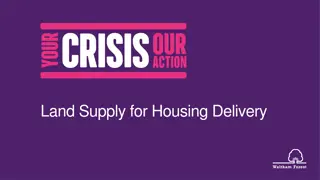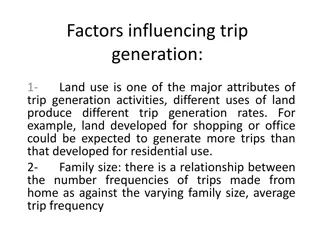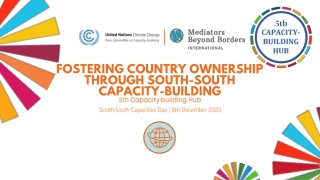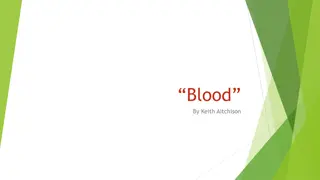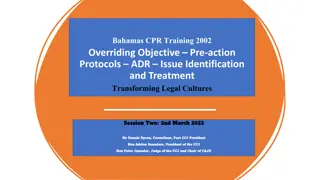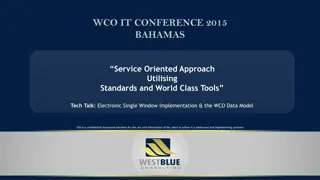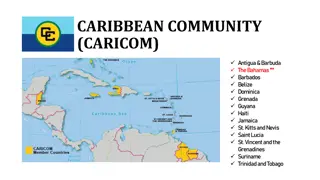Understanding Beneficial Ownership and DNFBPs in The Bahamas
Corporate vehicles play a crucial role in the global economy but are also misused for illicit activities like money laundering and terrorism financing. This presentation by The Compliance Commission of The Bahamas focuses on defining beneficial owners, meeting regulatory obligations, and addressing vulnerabilities exploited by criminals through professional intermediaries.
Download Presentation

Please find below an Image/Link to download the presentation.
The content on the website is provided AS IS for your information and personal use only. It may not be sold, licensed, or shared on other websites without obtaining consent from the author. Download presentation by click this link. If you encounter any issues during the download, it is possible that the publisher has removed the file from their server.
E N D
Presentation Transcript
THE COMPLIANCE COMMISSION THE COMPLIANCE COMMISSION OF THE BAHAMAS OF THE BAHAMAS Concealment of Beneficial Owners Concealment of Beneficial Owners & & PEPs PEPs Designated Non Financial Business and Professions (DNFBPs) Designated Non Financial Business and Professions (DNFBPs) December 17-18 , 2020 1
INTRODUCTION INTRODUCTION Corporate vehicles, such as companies, trusts, foundations, partnerships, nominees and other types of legal persons and arrangements conduct a wide variety of commercial and entrepreneurial activities. However, despite the essential and legitimate role that corporate vehicles play in the global economy, they have also been misused for illicit purposes, including money laundering (ML), bribery and corruption, tax fraud, terrorist financing (TF), and other illegal activities. This is because, for criminals trying to circumvent anti-money laundering (AML)and counter-terrorist financing (CFT) measures, corporate vehicles are an attractive way to convert the proceeds of crime before introducing them into the financial system. Corporate vehicles and arrangements are also used by the criminal to disguise their identity, hence distancing them from their illicit assets. Increasing the transparency of corporate vehicles is an effective way to prevent their misuse for criminal purposes. 2
PURPOSE PURPOSE The purpose of this presentation is to assist Designated Non Financial Business and Professions (DNFBPs) in ( (1 1) ) defining BeneficialOwner (BO), ( (2 2) ) meeting their obligation to perform Customer Due Diligence (CDD), specifically Identification and Verification on the customer and beneficial owners of the customer as per the Financial Transaction Reporting Act (FTRA) 2018 and ( (3 3) ) highlight some vulnerabilities associated with the practices and services offered by professional intermediaries which are commonly exploited by criminals to conceal beneficial ownership. 3
WHO IS A BENEFICIAL OWNER? WHO IS A BENEFICIAL OWNER? Beneficial owner means (a) a natural person who ultimately owns or control a facility holder; (b) a natural person on whose behalf a transaction is being conducted; (c) a natural person who exercise ultimate effective control over a legal person or legal arrangement; and (d) Where no natural person is identified under sub paragraphs (a), (b), (c) the identity of the natural person who holds the position of senior managing official. FTRA 2018 s (2) 4
ESTABLISHING THE IDENTITY OF THE BENEFICIAL ESTABLISHING THE IDENTITY OF THE BENEFICIAL OWNERS CORPORATE CUSTOMERS OWNERS CORPORATE CUSTOMERS Your legal obligation as a registered DNFBP is to determine who are the real or ultimate beneficial owner(s). A beneficial owner is always a natural person, because a legal person cannot exert ultimate control over or benefit from an asset. This is due to the fact that legal persons are always controlled, directly or indirectly, by natural persons. Therefore the beneficial owner can only be an individual, not a company or organization. There may be more than one beneficial owner associated with your customer. Your task is to identify and verify the identity of all beneficial owners of your customer. 5
WHY IDENTIFY AND VERIFY THE BENEFICIAL OWNER? WHY IDENTIFY AND VERIFY THE BENEFICIAL OWNER? A vital CDD arrangements. It is crucial to know who the beneficial owner(s) are so that you can make appropriate decisions about the level of ML and TF risk linked to your customer. Some criminal organizations deliberately try to hide the true owners and controllers of their business and its assets. Therefore identifying and verifying your customers beneficial owner(s) can sometimes be difficult because the ownership structure is complex. DNFBPs should therefore remain alert to the possibility that this complexity may be a calculated attempt to conceal the beneficial owner(s). CDD task is to identify and verify your customers beneficial ownership 6
MISUSE OF LEGAL PERSONS AND ARRANGEMENTS TO MISUSE OF LEGAL PERSONS AND ARRANGEMENTS TO OBSCURE BENEFICIAL OWNERSHIP OBSCURE BENEFICIAL OWNERSHIP Seen from a global perspective, there are many different kinds of legal persons that exist under a multitude of different company laws, making it difficult for law enforcement to trace assets held by legal persons across numerous countries. Legal persons, specifically companies, are prominent features of most schemes and structures designed to obscure beneficial ownership. The separation of legal and natural personalities offered by companies is a key feature influencing this popularity. 7
MISUSE OF LEGAL PERSONS AND ARRANGEMENTS TO MISUSE OF LEGAL PERSONS AND ARRANGEMENTS TO OBSCURE BENEFICIAL OWNERSHIP (cont d) OBSCURE BENEFICIAL OWNERSHIP (cont d) COMPANIES COMPANIES The main feature of a company is the strict separation of the natural person investing in and owning the company by shares and the legal personality of the company itself. A company s legal personality allows it to conduct business and own assets under its own name, assuming all rights and being liable for all debts and obligations it enters into. This legal structure allows a natural person to take part in business without disclosure of their personal identity. Even though shareholders own the company, usually they are not actively involved in management functions, but instead elect or appoint a board of directors to manage the company in a fiduciary capacity. 8
MISUSE OF LEGAL PERSONS AND ARRANGEMENTS TO MISUSE OF LEGAL PERSONS AND ARRANGEMENTS TO OBSCURE BENEFICIAL OWNERSHIP (cont d) OBSCURE BENEFICIAL OWNERSHIP (cont d) LIMITED LIMITED LIABILITY LIABILITY COMPANIES(LLCs) LLCs consist of combined elements of partnerships and companies. They do not offer their interests to the public, and are therefore generally subject to less stringent reporting and oversight regimes. While members can manage a LLC directly, this function is usually performed by managers or directors. The LLC contract gives the members a high degree of freedom in determining the division of ownership and control among the members, thus allowing latitude to exploit nominees and control arrangements in order to obscure true beneficial ownership. LLCs are vulnerable to misuse because they can be managed anonymously as there is no public disclosure of the members identities. COMPANIES(LLCs) 9
TECHNIQUES USED TO OBSCURE BENEFICIAL TECHNIQUES USED TO OBSCURE BENEFICIAL OWNERSHIP OWNERSHIP A range of Methods and characteristics have been identified by The Financial Action Task Force (FATF), which allow legal persons to be exploited by criminals to conceal beneficial ownership. Many of these, including (1) the use of shell, shelf, , and front companies, (2) the construction of complex chains of ownership using multiple legal persons,(3) the splitting of assets and company administration across different countries, and (4)the use of formal and informal nominees nominees. . 10
GENERATING COMPLEX OWNERSHIP AND CONTROL GENERATING COMPLEX OWNERSHIP AND CONTROL STRUCTURES STRUCTURES The leading method used to disguise beneficial ownership involves the use of legal persons and arrangements to distance the beneficial owner from an asset through complex complex chains of ownership. Adding numerous layers of ownership between an asset and the beneficial owner in different jurisdictions, and using different types of legal structures, can prevent detection and frustrate investigations. 11
USING INDIVIDUALS AND FINANCIAL INSTRUMENTS TO USING INDIVIDUALS AND FINANCIAL INSTRUMENTS TO OBSCURE THE BO OBSCURE THE BO Nominee directors and shareholders, particularly informal nominees (or straw men ), are a key vulnerability , and were identified in a large majority of case studies assessed. The role of the nominee, in many cases, is to protect or conceal the identity of the beneficial owner and controller of a company or asset. A nominee can help overcome jurisdictional controls on company ownership and circumvent directorship bans imposed by courts and government authorities. 12
SPECIALIST AND PROFESSIONAL INTERMEDIARIES SPECIALIST AND PROFESSIONAL INTERMEDIARIES VULNERABILITIES VULNERABILITIES Professional intermediaries, including lawyers, accountants, and Trust and Company Service Providers (TCSPs), play an important role in modern society. For the most part, these professionals operate with integrity and in accordance with national and international laws. However, the reputation of these professional intermediaries also makes them the target of criminals, and may result in some professionals becoming involved in the concealment of beneficial ownership for criminal purposes, either through coercion or corruption, or through negligence or a failure to identify suspicious activities. 13
SPECIALIST AND PROFESSIONAL INTERMEDIARIES SPECIALIST AND PROFESSIONAL INTERMEDIARIES VULNERABILITIES VULNERABILITIES (cont d) (cont d) Listed below are a number of activities that commonly require the services of a legal or other professional intermediary. Inherently these services pose ML/TF risk and when clients seek to misuse the intermediaries services to conceal the BO or for some other illicit means, even law abiding professionals may be vulnerable. The services are: (1)management of client accounts; (2) purchase of real property; (3) creation of trusts and companies; (4) management of trusts and companies; (5) managing client affairs; (6) undertaking certain litigation; and (7)setting up and managing charities. 14
RISK INDICATORS OF CONCEALED BENEFICIAL RISK INDICATORS OF CONCEALED BENEFICIAL OWNERSHIP OWNERSHIP Indicators Indicators or or (Red 1. The client is reluctant to provide personal information. 2. The client is reluctant or unable to explain: a) their business activities and corporate history b) the identity of the beneficial owner c) their source of wealth/funds d) why they are conducting their activities in a certain manner e) who they are transacting with f) the nature of their business dealings with third parties (particularly third parties located in foreign jurisdictions). (Red Flags) Flags) about about the the client client or or customer customer 15
POLITICALLY EXPOSED PERSONS POLITICALLY EXPOSED PERSONS (PEPs) WHO WHO IS IS A A PEP? A Politically Exposed Person (PEP) as defined by FATF is; An individual who is or has been entrusted with a prominent public function, inclusive of a head of state or government, legislator, politician, senior government, judicial or military official, senior executive of a state-owned corporation, or important political party official. Requirements for a PEP apply also to family members or close associates, any individual publicly known, or known by the financial institution to be a close personal or professional associate. PEP? 16
POLITICALLY EXPOSED PERSONS POLITICALLY EXPOSED PERSONS (PEPs) PEPs PEPs RISKS RISKS The FATF recognized that, due to their position and influence, many PEPs are in positions that potentially can be abused for the purpose of committing money laundering (ML) offences and related predicate offences, such as corruption and bribery. PEPs are also known to be involved in activities related to terrorist financing (TF) and Proliferation Financing (PF). As a result of the aforementioned factors PEPs pose a higher risk to financial institutions and DNFBPs. 17
POLITICALLY EXPOSED PERSONS (PEPs) POLITICALLY EXPOSED PERSONS (PEPs) PEPs PEPs RISKS RISKS (cont d) To address the risks associated with PEPs, FATF Recommendations 12 and 22 require financial institutions and DNFBPs implement additional customer due diligence measures to business relationships with PEPs in order to prevent their misuse of the financial system and to detect such potential abuse if and when it occurs. (cont d) 18
TYPES OF PEPs TYPES OF PEPs Domestic PEPS: an individual that holds a prominent public position or function domestically. This includes the Head of State or government, senior executives and financial regulators. Foreign PEPs: an individual that holds a prominent public position or function within a foreign country. This includes the Head of State or government, senior executives and financial regulators of foreign countries. International PEPs: an individual that holds a prominent public position or function by an international organization. This can include members of the board in an organization and senior management positions. Family Members: individuals (close relatives)that are related to a PEP can also be classified as a PEP themselves. Close Associates: an individual who has close relations with a PEP whether it is socially or professionally. If an individual is identified as a PEP, this does not mean that they are involved in criminal activity, but it means that precautions may need to be taken as they are of higher risk to DNFBPs. 19
INTERNATIONAL ORGANIZATION PEPs INTERNATIONAL ORGANIZATION PEPs International Organization PEPs does not include middle-ranking or more junior officials. International Organizations include but are not limited to: United Nations (UN) and affiliated international organizations Inter-American development Bank (IDB) International Labor Organization (ILO) International Monetary Fund (IMF) 20
RISK INDICATORS OF CONCEALED BENEFICIAL RISK INDICATORS OF CONCEALED BENEFICIAL OWNERSHIP OWNERSHIP PEPs ATTEMPTING TO SHIELD THEIR IDENTITY PEPs ATTEMPTING TO SHIELD THEIR IDENTITY PEPs are aware that their status as a PEP may facilitate the detection of their illicit actions. This means that they may attempt to shield their identity, to prevent detection. Examples of ways in which this is done are: Use of corporate vehicles (legal entities and legal arrangements) to obscure the beneficial owner. Use of corporate vehicles without valid business reason. Use of intermediaries when this does not match with normal business practices or when this seems to be used to shield identity of PEP. Use of family members or close associates as legal owner. 21
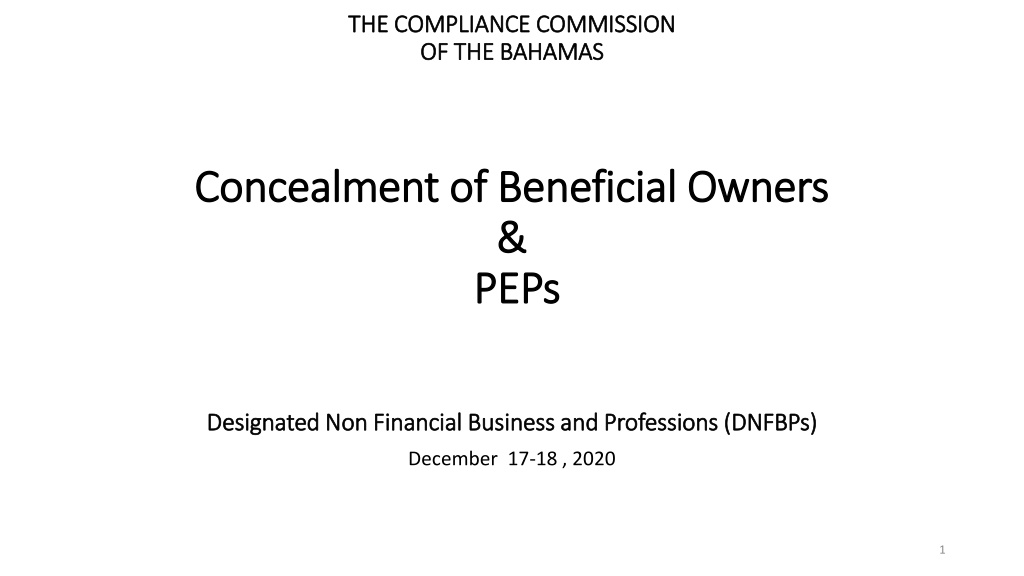

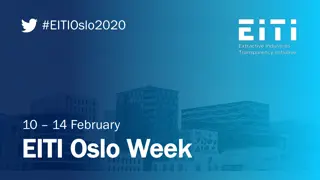

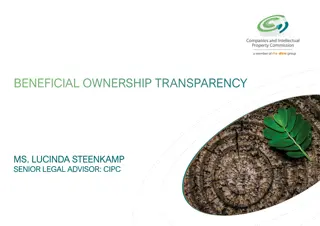
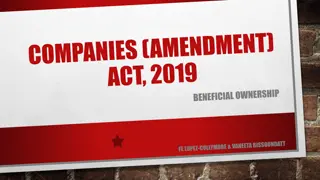
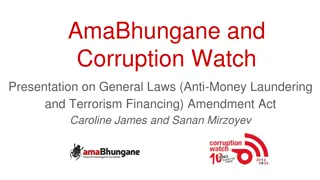
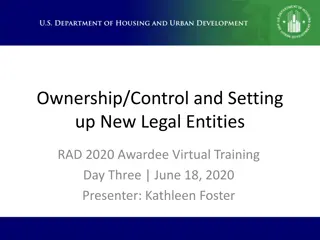
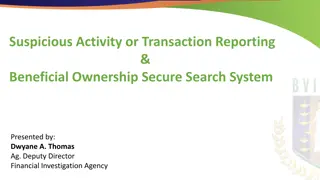
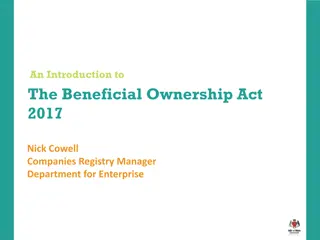
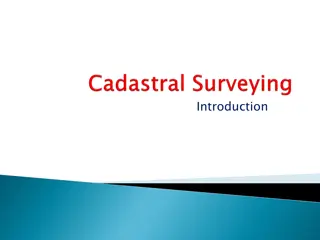


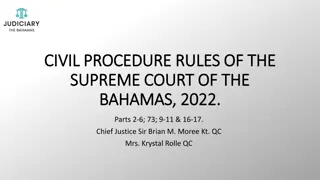
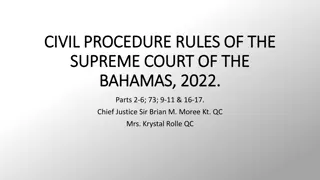
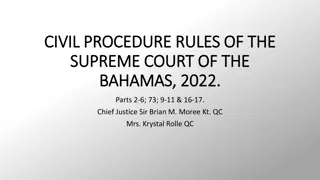
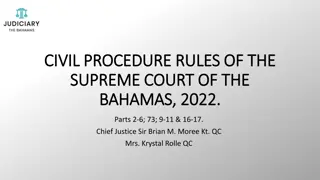
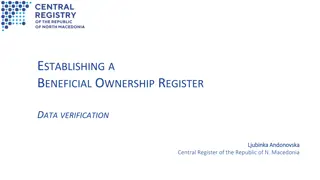
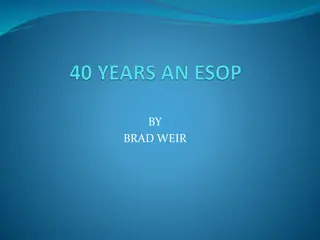


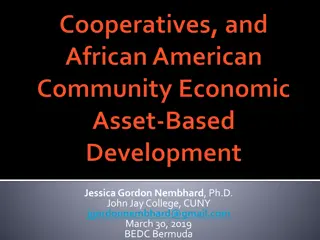
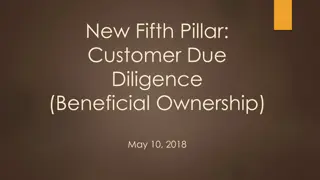


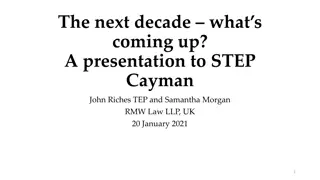
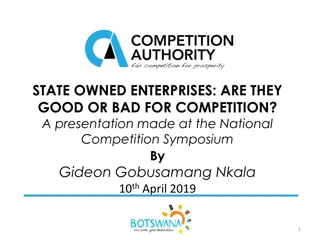
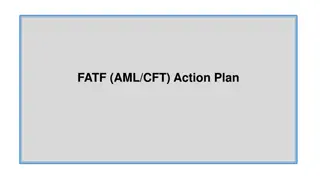
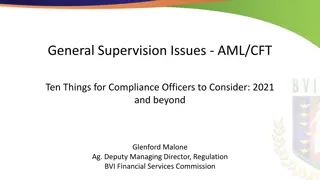
![Enhancing Corporate Transparency: Analysing The Companies Amendment Bill [B27B-2023]](/thumb/60028/enhancing-corporate-transparency-analysing-the-companies-amendment-bill-b27b-2023.jpg)
